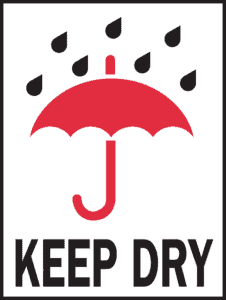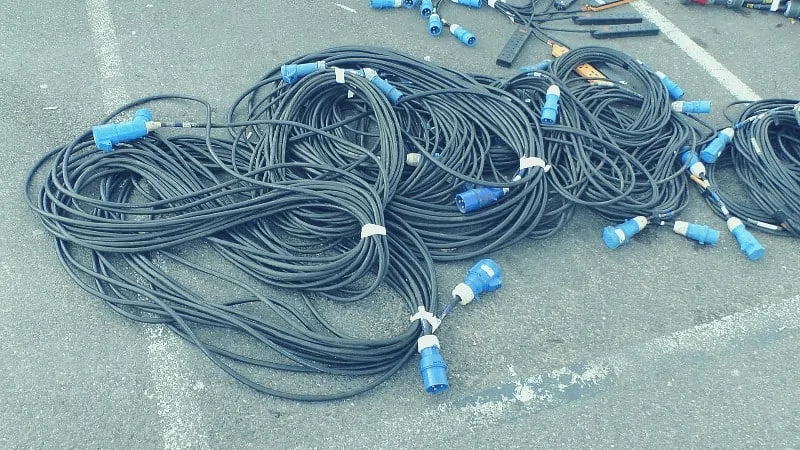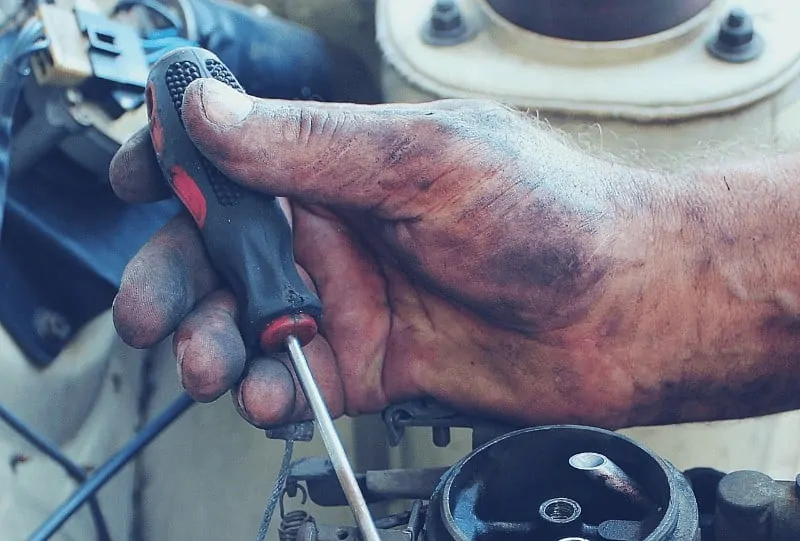Table of Contents
- 1 How to Use a Generator Safely
- 1.1 » Never run it indoors even in storms
- 1.2 » Set it on a dry area
- 1.3 » Beware of electrocution
- 1.4 » Thinking of backfeeding? Just don’t!
- 1.5 » Avoid using undersized and badly damaged cords
- 1.6 » Let it cool before refueling
- 1.7 » Don’t get overboard with cord length
- 1.8 » Prevent the risk of a generator explosion
- 2 Tips for Portable Generator Maintenance
- 3 Conclusion
To most people, generators are more or less like a water pump with regard to ease of usage. You simply pull the cord or hit the Start button, plug in your appliances, and you are ready to go.
But wait. While it’s meant to increase your odds of weathering a storm, a generator could kill you too if mishandled. Not to take it lightly, it is estimated that portable generators have been causing an average of 70 deaths per year in the USA alone since 2005. This number could shoot as portable generators become more of a necessity than a convenience. But it could also be reduced if we handled this equipment with the seriousness it deserves.
Below are a few generator safety tips that could save your life and those of others when using a portable generator. But before explaining them in more detail, here is a short summery of the steps you need to follow for a safe use of your generator:
- Calculate your wattage needs to prevent overloading
- Read the manufacturer’s manual carefully noting any special procedures unique to that model
- Never use a generator in a room or garage not even with the doors and windows open
- Always place the generator at least 15 feet away from the house
- Always keep it dry to prevent electrocution and damage
- The generator should be steady and stable when running
- Ensure proper connection and wiring from the generator to your home, RV, boat, and construction tools
- Drain the fuel tank when storing the generator for more than 6 months. If not so, add a fuel stabilizer to keep the gasoline in good condition and to prevent gum build-up.
How to Use a Generator Safely
» Never run it indoors even in storms
The biggest mistake that most people make is to run the generator indoors. To say that that this is dangerous is an understatement.
As generators burn fuel, they emit carbon monoxide alongside other exhaust fumes. Dubbed the ‘Winter Killer’, carbon monoxide (CO) is a lethal, colorless, odorless, and tasteless gas that builds up indoors and in partially enclosed spaces and could kill in minutes. Actually, this is the leading cause of most portable generator-related deaths.
Amidst extreme weather, most people are tempted to run the generator in the garage, basement, or an attached shed which is also very wrong.
A portable generator should be run outside in an area with plenty of air, and at least 20 feet away from your home.
Importantly, you need to ensure that the exhaust points away from your home’s door and windows to reduce any chances of this killer gas getting in.
If you live in areas that are often hit by outages and, therefore, have to power up the generator regularly, it’s a smart idea to install CO alarms and inspect them regularly to make sure that they are working properly.
» Set it on a dry area

An easy way out here is to invest in a weatherproof generator tent. There are lots of them online and in most hardware stores.
Besides being waterproof, the generator tent should be able to withstand strong winds and a significant load of snow.
» Beware of electrocution
In addition to not exposing the generator to moisture environments- rain, snow, and dew- you should also avoid handling it with wet hands as much as possible.
Cases of portable generator electrocution are rare compared to CO poisoning. But they are fatal when they occur too.
» Thinking of backfeeding? Just don’t!
Backfeeding is often regarded as an alternative to using long extension cords and avoiding the cost of buying a transfer switch and having it professionally installed.
It basically involves using an extension cord with prongs (male ends) on both ends to connect the generator directly to an outlet in the house. This electrifies all other outlets on the same circuit. But it is illegal and very dangerous.
The thing with this hillbilly connection is that it sends a considerable amount of power onto the grid too. This poses a huge risk and can actually electrocute (and even kill) unsuspecting innocent linemen trying to repair a line they believe is down.
There are only 2 choices here: invest in a transfer switch and have it installed by a professional electrician (recommended) or get heavy-duty power cords.
» Avoid using undersized and badly damaged cords
Installing a transfer switch can be quite expensive. It will set you back $500-$900 (including labor) depending on whether you want it with manual or automatic functionality. But it’s not as expensive as purchasing several feet of heavy-duty cords. Add the convenience of not having to deal with entangled cords, and a transfer switch starts making sense.
If you have to use cords, though, understand the drill:
- Never use undersized cords as they can easily overheat, melt, and even cause fires (use a 12-gauge, outdoor-rated cord)
- Never use frayed or damaged cords
- Avoid placing anything (rugs, for instance) on top of an extension cord
» Let it cool before refueling
This should be common sense, but it’s hands down the most overlooked bit. Gasoline and hot engine parts never go hand in hand.
All it takes is a single drop of gasoline on a hot surface on the generator to create enough inferno to engulf you. And this could get much worse if you are fond of having several other gallons of gas right next to the generator.
The longest time a generator can take to cool off is 10-15 minutes. This isn’t long enough to make the food in your fridge to go bad. Besides, letting the generator cool down after several hours of continuous running also boosts its usable life.
» Don’t get overboard with cord length
Carbon monoxide poisoning is real with portable generators. These generators can also get very loud depending on their size and their proximity to the house.
For these reasons, it’s common for homeowners to place the generator way beyond the recommended 20-feet range. There’s no problem with this as long as you are using a heavy-duty cord that has been rated for outdoor use.
However, avoid placing the generator over 100 feet as this could cause a voltage drop and a premature burnout of the motor and compressor.
» Prevent the risk of a generator explosion
Although unlikely, it is not impossible for a generator to explode if we are careless with its fuel. Here is how to prevent this from happening:
- Never overfill the tank as fuel can expand and overflow onto the hot engine parts leading to fire or a deadly explosion
- Never add fuel while the engine is running
- Always wait for the engine to cool down completely before adding fuel
- Never store a generator with fuel in a room with open flames or sparks
- Avoid smoking while adding fuel to the tank
Tips for Portable Generator Maintenance
A good portable generator can last you through hundreds of tornadoes and hurricanes. But adequate and timely maintenance is vital.
Here are a few tips to ensure that your generator is always up for the task:
- Always read and follow the manufacturer’s manual to the latter
- Check oil levels and top up or replace regularly
- Don’t let the fuel run out
- Prevent motor burn-out by investing in heavy-duty power cords
- Always keep a supply of oil and air filters for convenience during prolonged outages
- Invest in a reliable cover for use in the rain
- Keep it covered when not in use
- For long-term storage, drain out all the gas unless you’ve used a stabilizer to prevent corrosion and clogging
- Run it regularly for around 30 minutes to prevent the engine from rusting and to keep the battery of the electric starter charged
Regarding oil change:
- After buying a new generator, check whether your installer did add oil
- Don’t use any other oil for your generator. Read the manufacturer’s guide on the recommended type of oil depending on the type of engine
- Consider the conditions in which you’ll be running the generator. A dusty construction site means that the oil gets dirty often and should, therefore, be replaced sooner
- During emergencies when generators run for prolonged periods of time, check the oil levels regularly and change if necessary
- If possible, change the oil filter as often as you change the oil
Conclusion
A portable generator is meant to give you peace of mind when regular hurricanes, tornados, and severe weather extremities are driving you insane. But this largely depends on whether you understand what you are doing with the generator and how good you maintain it.


